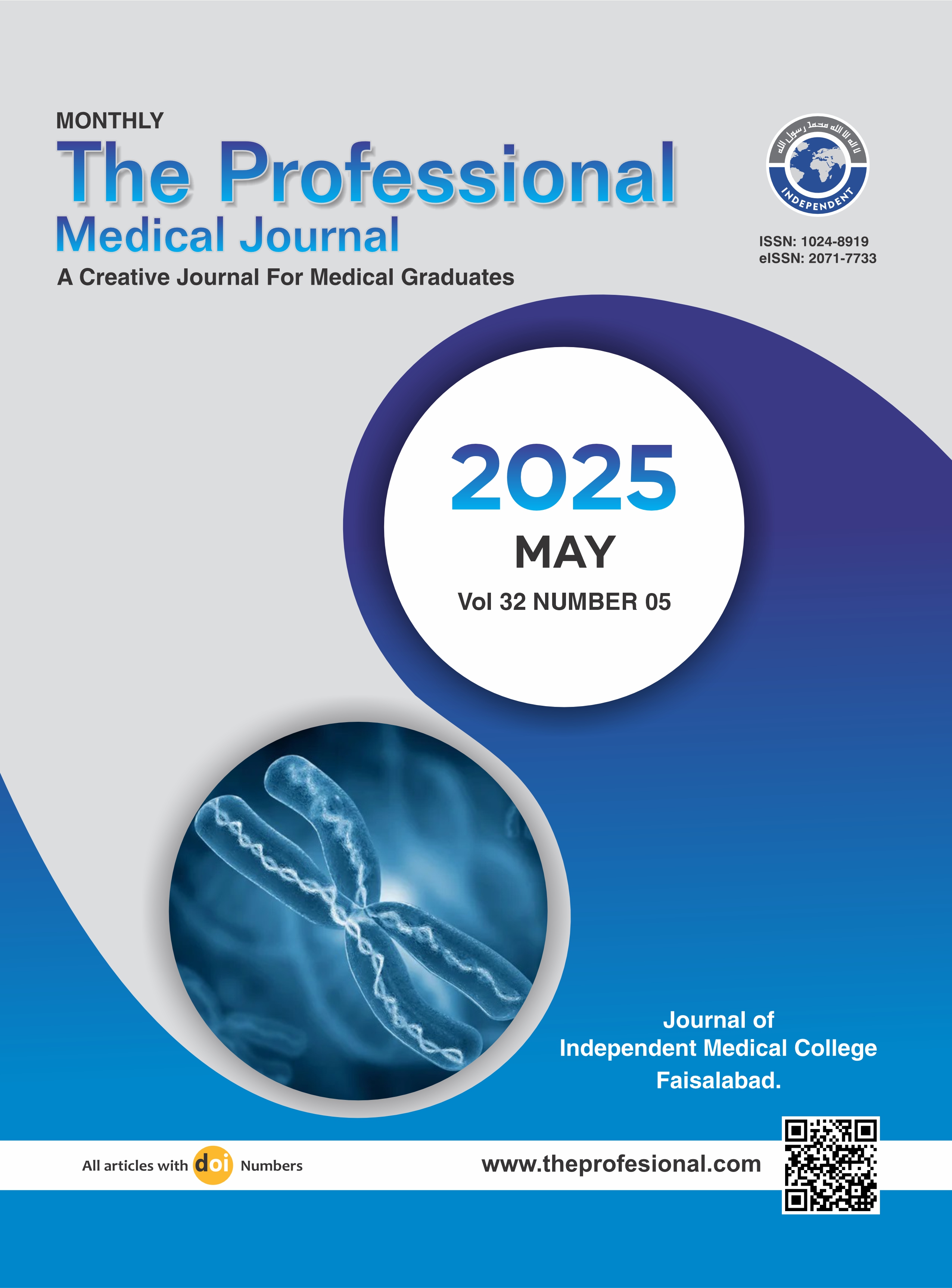Frequency of hyponatremia in pediatric intensive care unit at a private tertiary care hospital in Lahore.
DOI:
https://doi.org/10.29309/TPMJ/2025.32.05.8406Keywords:
Hyponatremia, Mortality, Pediatric ICU, Serum Sodium LevelAbstract
Objective: To determine the frequency and outcome of hyponatremia among children admitted at pediatric intensive care unit at Fatima Memorial Hospital, Lahore. Study Design: Cross-sectional study. Study Setting: Pediatric Intensive Care Unit, Fatima Memorial Hospital in Lahore. Study Period: August 25, 2022 to August 24, 2023. Methods: A total of 310 patients who met the specified criteria for admission to the PICU were included in this study. Patient records were carefully reviewed, and relevant data pertaining to sociodemographic factors, diagnosis, sodium levels, and subsequent outcomes were meticulously recorded. The collected data was then inputted into SPSS version 25 for analysis. In order to assess the relationship between sociodemographic factors, diagnosis, outcome variables, and hyponatremia, a chi-square test was employed. A p-value of less than 0.05 was deemed to be statistically significant. Results: Total 310 children admitted at PICU having age 1 month to 12 years were included in study. Gender distribution showed that, 208(67.1%) were males and 102(32.9%) were females. The mean age of the children was 25.97±34.893 months. The mean serum sodium level was 137.32±6.478 mEq/L. Among 310 children admitted at PICU, 84(27.1%) had hyponatremia. The mean stay in PICU was 4.54±3.682 days and mean stay in hospital was 5.37±3.920 days. Conclusion: The incidence of hyponatremia was found to be high in the study conducted. Moreover, the occurrence of hyponatremia was significantly linked to an extended length of stay in the pediatric intensive care unit, thereby imposing an additional burden on hospital administration. The prompt identification and rectification of hyponatremia can result in a reduction in both the morbidity associated with the condition and the duration of hospitalization.
Downloads
Published
Issue
Section
License
Copyright (c) 2025 The Professional Medical Journal

This work is licensed under a Creative Commons Attribution-NonCommercial 4.0 International License.


